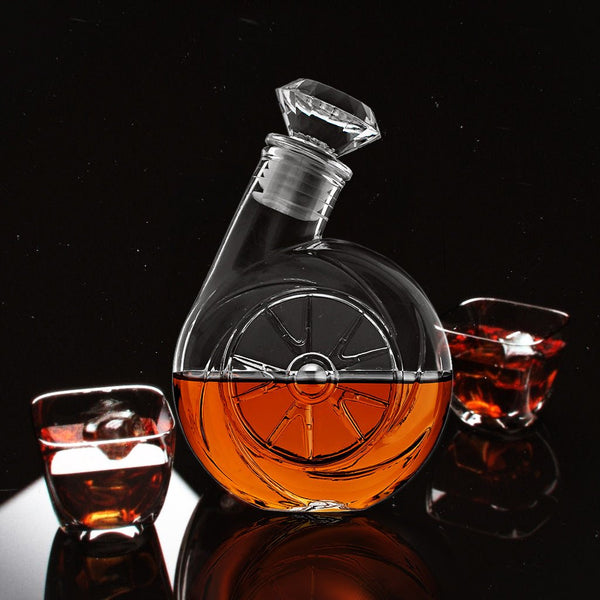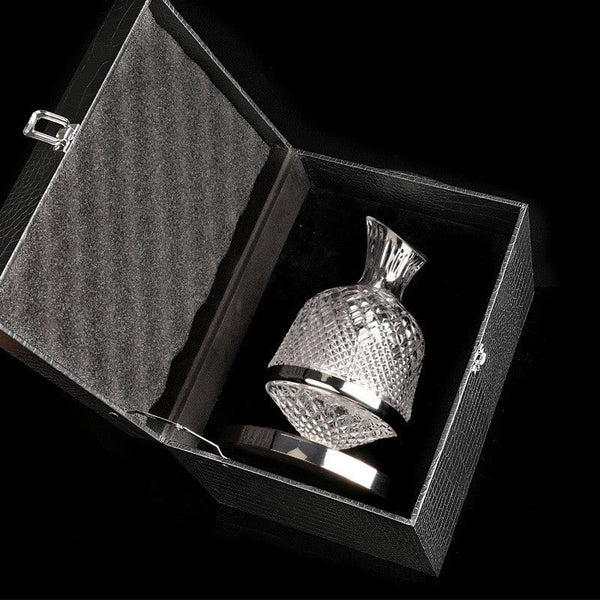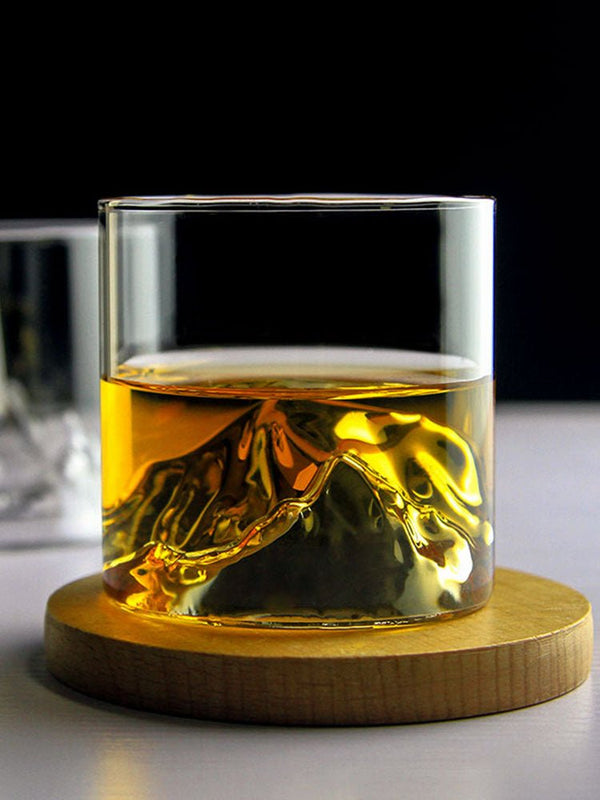Glenlivet 18 vs Blue Label
Products on sale
-
 Turbocharger Whiskey Decanter
Turbocharger Whiskey Decanter
- Regular price
- $42.99
- Sale price
- $42.99
- Regular price
-
$56.99 - Unit price
- per
Sold out -
 Crystal-cut Rotating Decanter
Crystal-cut Rotating Decanter
- Regular price
- from $119.81
- Sale price
- from $119.81
- Regular price
-
$160.00 - Unit price
- per
Sold out -
 Japanese Whisky Glass
Japanese Whisky Glass
- Regular price
- from $24.99
- Sale price
- from $24.99
- Regular price
-
- Unit price
- per
Sold out
An in-depth analysis for connoisseurs and gift seekers.
The art of whisky appreciation can be as nuanced as the drink itself, especially when one is faced with the choice between two prestigious labels: The Glenlivet 18 and Johnnie Walker Blue Label.
As we embark on this comparative journey, our aim is not just to cater to those connoisseurs who revel in their sips, but also to those looking for the perfect gift.
Understanding the battlefield: single malt vs blended scotch
At first glance, one might wonder how these two whiskies could be compared, given their distinct categories.
The Glenlivet 18 is a single malt Scotch, meaning it hails from one distillery and is produced entirely from malted barley.
On the flip side, Johnnie Walker Blue Label is a blended Scotch, a carefully crafted mix of malt and grain whiskies from a variety of distilleries.
Glenlivet 18: the charm of speyside
The Glenlivet 18-Year-Old is a testament to the fine art of whisky making in the Speyside region of Scotland.
On the nose, it graces you with a bouquet of ripe orchard fruits like apple and pear, complemented by sweet almond and cinnamon undertones.
The palate unfurls a medley of honeyed fruitiness, spiced oak, and a hint of rich, dark chocolate, leading to a lingering warm finish.
As a gift, Glenlivet 18, with its elegant packaging and renowned reputation, leaves a strong impression.
For connoisseurs, the layered nuances of this single malt provide a rewarding tasting journey.
Johnnie Walker Blue Label: blending mastery
Johnnie Walker Blue Label stands as the zenith of the Johnnie Walker line, a tribute to the art of blending.
It seeks to revive the flavor profile of whiskies from the 19th century. The nose is an orchestra of honey, dried fruits, and a gentle hint of spice and smoke. The palate is a sumptuous blend of floral, fruity, and spicy notes, dancing with dark chocolate and a hint of smokiness, culminating in an evolving, exceptionally long finish.
For gifting, the Blue Label, with its distinctive presentation and prestigious reputation, certainly makes an impact.
For connoisseurs, its blended nature offers a complex tasting experience, merging the traits of several rare whiskies.
A closer look at the Glenlivet distillery
Nestled in the heart of Scotlands Speyside region, The Glenlivet distillery is steeped in a rich history dating back to the early 19th century.
The distillery was a pioneer in legal whisky production in Scotland, with its founder, George Smith, envisioning a whisky that was smooth, rich, and exceptional - a vision that continues to define The Glenlivet's whiskies today.
Diving into the art of blending at Johnnie Walker
Johnnie Walker has been crafting world-renowned blended whiskies since the mid-19th century.
The Blue Label, their premium offering, embodies the brand's heritage and expertise, showcasing their ability to blend malt and grain whiskies into a complex yet harmonious mix.
Each bottle of Blue Label contains whiskies from some of the rarest and most exceptional distilleries across Scotland, some of which are no longer in operation.
Glenlivet 18 vs Blue Label: the verdict
Deciding between Glenlivet 18 and Blue Label boils down to personal preference.
For connoisseurs, I suggest the Glenlivet 18. It offers a rich, immersive tasting journey with layers of complex flavors that captivate the senses.
For a gift, the Johnnie Walker Blue Label takes the crown, with its unique blending story, distinctive packaging, and prestigious reputation making it an impressive present.
Whisky appreciation is subjective, and the beauty of it lies in the exploration.
Whether you're savouring a dram or presenting it as a gift, remember that both Glenlivet 18 and Johnnie Walker Blue Label offer exceptional experiences, each reflecting a unique facet of the fascinating world of whisky.
Let your journey in whisky appreciation guide your choice.



